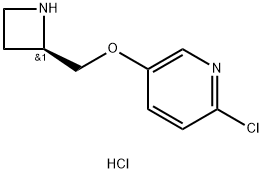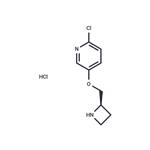Description
ABT-594 is a potent agonist of neuronal α4β2 subunit-containing nicotinic acetylcholine receptors (nAChRs; K
i = 37 pM in a radioligand binding assay). It is selective for neuronal nAChRs over neuromuscular α1β1δγ subunit-containing nAChRs (K
i = 10,000 nM), α
1B-, α
2B-, and α
2C- adrenergic receptors (K
is = 890, 597, and 342 nM, respectively), and 70 other receptors, enzymes, and transporters (K
is = >1,000 nM) in radioligand binding assays. ABT-594 induces [
86Rb
+] efflux in K177 cells transfected with human neuronal α4β2 subunit-containing nAChRs (EC
50 = 140 nM).
In vivo, ABT-594 (0.05 and 0.01 mg/kg, s.c.) increases latency to paw withdrawal in a hot-plate test in rats. It also induces hypothermia, seizures, and an increase in blood pressure.
Uses
ABT 594 Hydrochloride selective α4β2 nAChR agonist (EC50 = 140 nM for human α4β2 nAChRs, in vitro). Exhibits >900-fold selectivity for α4β2 nAChRs over other neurotransmitter receptors. Displays analgesic properties in various animal models of pain. Potentiates gabapentin mediated analgesia. Also demonstrates cognitive enhancement effects in rodent model of attention deficit.

